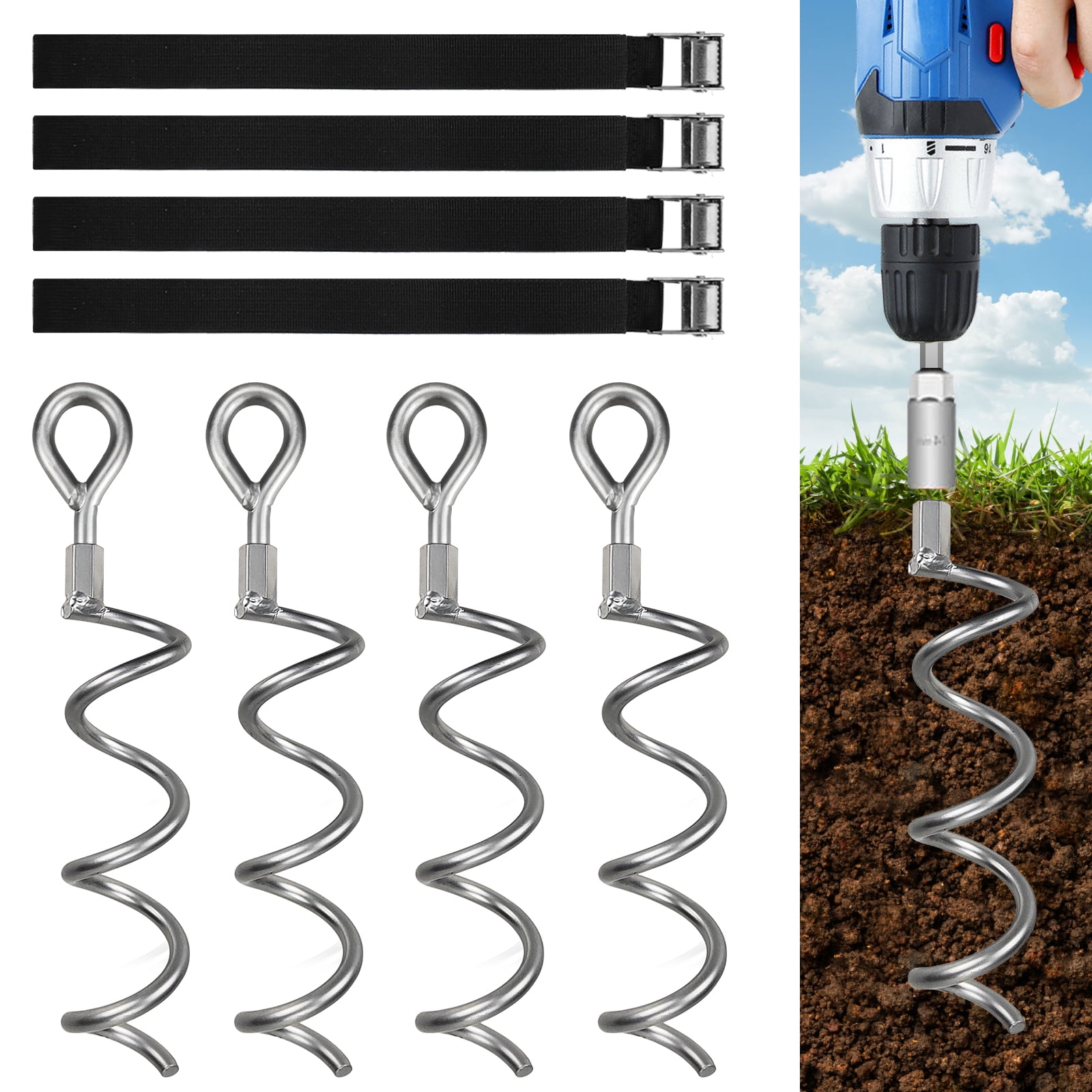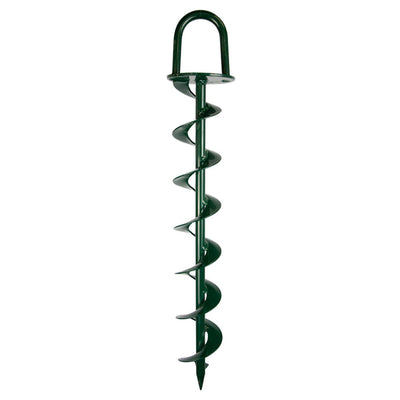Learning About the Importance of a Ground Anchor in Protecting Heavy Equipment
Learning About the Importance of a Ground Anchor in Protecting Heavy Equipment
Blog Article
Discover the Various Kinds Of Ground Anchor for Your Next Task
From auger supports, which excel in varied dirt problems, to stake supports designed for momentary installations, the alternatives are many. Furthermore, concrete and screw supports existing unique advantages in details scenarios, while deadman supports are customized for applications needing resistance to side pressures.

Auger Anchors
Auger supports are a popular selection in various construction and landscaping jobs due to their distinct design and reliable anchoring capacities. These supports contain a helical screw-like shaft that is driven into the ground, enabling a safe and secure hold. The spiral design assists in very easy installation and makes best use of resistance versus side forces, making auger anchors specifically reliable in applications such as fencing, short-lived structures, and erosion control.
The setup process of auger supports is reasonably simple. They can be manually or mechanically installed, depending on the dimension and called for depth. This adaptability enables their use in varied soil problems, from sandy to clayey surfaces. Moreover, auger anchors can be conveniently removed and recycled, which adds to their cost-effectiveness and sustainability.
One of the considerable advantages of auger supports is their capacity to distribute lots equally across the bordering soil, reducing the risk of dirt disturbance and decreasing environmental influence. Furthermore, they are much less at risk to heaving or loosening gradually contrasted to typical anchoring approaches. Subsequently, auger anchors are an excellent option for tasks calling for long lasting and reputable anchoring remedies.

Stake Anchors
When it pertains to safeguarding frameworks in a selection of outdoor applications, stake supports supply a straightforward and trustworthy solution. These anchors are commonly created from long lasting products such as steel or aluminum, designed to hold up against ecological stresses while supplying optimum security. Their simple layout permits for quick installation, making them an optimal choice for irreversible or momentary anchoring demands.
Stake supports are especially useful in safeguarding camping tents, covers, and other light-weight structures against wind and climate. They operate by being driven right into the ground at an angle, producing a solid hold that resists pull-out forces - Ground Anchor. The effectiveness of risk supports depends on numerous variables, including dirt type, wetness content, and the angle of setup
For included security, many stake anchors feature attachment points for ropes or straps, permitting tension adjustments as needed. In applications such as landscape design or construction, they can efficiently support tools or structures on uneven terrain. On the whole, risk anchors provide a functional and cost-efficient solution for safeguarding numerous outdoor setups, making them a favored choice for contractors and do it yourself lovers alike.
Concrete Anchors
Concrete supports provide a durable solution for protecting structures to concrete surfaces, guaranteeing stability and safety in numerous applications. These anchors are necessary for projects ranging from residential constructions to large-scale commercial setups. They can be found in different kinds, consisting of expansion supports, adhesive anchors, and undercut supports, each developed for particular lots requirements and ecological conditions.
Development supports rely upon mechanical devices to hold the concrete when installed. They are perfect for tool to heavy-duty applications. Glue anchors use high-strength resource epoxy or material to bond the support to the concrete, using exceptional load-bearing capabilities, especially in cracked concrete scenarios. Undercut anchors develop an unique shape within the concrete, giving exceptional holding power, particularly in applications where tensile tons are widespread.
When executed appropriately, concrete supports dramatically enhance the architectural stability of various jobs, making them indispensable in contemporary building my sources techniques. Understanding the certain demands of your project will aid in picking the best kind of concrete support for the job.
Screw Anchors

Screw anchors are a flexible securing remedy that can be successfully used in a selection of applications where typical concrete supports might not be adequate. These supports are composed of a helical style that enables them to be easily driven right into the ground, making them perfect for usage in soil and other substrates. Their unique structure offers exceptional holding power and resistance to pull-out forces, making them suitable for countless jobs, from landscaping to architectural support.
One of the key benefits of screw supports is their convenience of installation. They call for marginal devices and can usually be mounted without the need for excavation, which saves both time and labor prices. Furthermore, screw anchors can be eliminated and reused, supplying a lasting solution for short-term applications.
Screw supports are particularly helpful in areas where dirt conditions are testing, such as sandy or loosened dirts. Their capacity to be mounted at differing midsts permits personalization based on particular task demands. On the whole, screw anchors give a reliable and trustworthy anchoring approach, making them an outstanding selection for engineers and contractors looking for reliable remedies for their tasks.
Deadman Anchors
Deadman anchors act as a durable solution for supporting frameworks in tough problems, specifically where conventional anchoring techniques may fail. These anchors contain big, heavy items hidden underground, which develop resistance versus side pressures. The layout generally includes a straight element, such as a block of concrete or a metal plate, buried in the soil, to which cables or straps are attached.
The performance of deadman anchors hinges on their ability to disperse loads over a larger see here location, minimizing the threat of failing in unstable dirt conditions. They are especially useful in applications such as keeping wall surfaces, short-lived frameworks, and slope stablizing, where dirt motion can compromise the honesty of the structure.
Setup of deadman supports requires mindful preparation to ensure they are placed at the appropriate depth and alignment, maximizing their load-bearing capacity. While they might require more labor and product than lightweight supports, their reliability in unfavorable problems makes them important for lasting tasks. In addition, deadman anchors are flexible and can be adjusted to numerous applications, making them a best option for designers facing unique difficulties in their tasks.
Conclusion
In summary, choosing the suitable type of ground support is essential for ensuring security and safety in different jobs. Auger anchors stand out in diverse dirt problems, while risk anchors fit short-lived applications. For concrete surface areas, growth and adhesive supports give reliable choices, and screw supports provide adaptability in challenging terrains. Deadman anchors are especially reliable in withstanding lateral pressures for maintaining walls. Careful factor to consider of these alternatives will enhance task outcomes and architectural stability.
In addition, concrete and screw anchors existing special advantages in certain circumstances, while deadman supports are customized for applications needing resistance to side pressures - Ground Anchor.Auger anchors are a preferred choice in numerous building and construction and landscape design tasks due to their unique design and effective securing capacities. They come in various kinds, including expansion anchors, sticky anchors, and undercut anchors, each created for details lots needs and environmental problems
Sticky supports utilize high-strength epoxy or material to bond the anchor to the concrete, offering exceptional load-bearing abilities, especially in cracked concrete situations. In general, screw anchors offer a trusted and efficient securing method, making them an excellent choice for specialists and designers seeking reliable remedies for their tasks.
Report this page